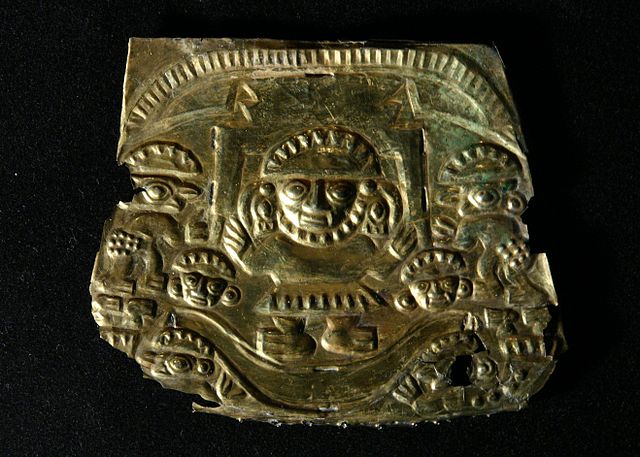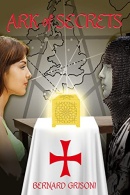<< Other Photo Pages >> Chotuna-Chornancap - Ancient Temple in Peru
Submitted by bat400 on Thursday, 15 September 2016 Page Views: 28274
Multi-periodSite Name: Chotuna-Chornancap Alternative Name: ChotCountry: Peru Type: Ancient Temple
Nearest Town: Lambayeque
Latitude: 6.7206S Longitude: 79.9531W
Condition:
| 5 | Perfect |
| 4 | Almost Perfect |
| 3 | Reasonable but with some damage |
| 2 | Ruined but still recognisable as an ancient site |
| 1 | Pretty much destroyed, possibly visible as crop marks |
| 0 | No data. |
| -1 | Completely destroyed |
| 5 | Superb |
| 4 | Good |
| 3 | Ordinary |
| 2 | Not Good |
| 1 | Awful |
| 0 | No data. |
| 5 | Can be driven to, probably with disabled access |
| 4 | Short walk on a footpath |
| 3 | Requiring a bit more of a walk |
| 2 | A long walk |
| 1 | In the middle of nowhere, a nightmare to find |
| 0 | No data. |
| 5 | co-ordinates taken by GPS or official recorded co-ordinates |
| 4 | co-ordinates scaled from a detailed map |
| 3 | co-ordinates scaled from a bad map |
| 2 | co-ordinates of the nearest village |
| 1 | co-ordinates of the nearest town |
| 0 | no data |
Internal Links:
External Links:
I have visited· I would like to visit
bat400 visited on 8th Sep 2018 - their rating: Cond: 3 Amb: 4 Access: 3

The origins of the complex date to the Sican (or Lambayeque) culture of about 900 CE.The legendary figure of Naylamp, who is supposed to have come from the sea, floating on a balsa raft, is associated with the pyramid. He is described variously as the builder of the pyramid, as having been buried there, or both.
The site was also used by the later cultures of the Chimu and Inca. A museum has opened at the site and houses both artifacts and human remains of sacrificial victims found buried within structure at the complex.
The location given is general for the site.
Note: Archaeologists find ancient tombs in Peru hinting at human sacrifice, see the most recent comment on our page
You may be viewing yesterday's version of this page. To see the most up to date information please register for a free account.
Do not use the above information on other web sites or publications without permission of the contributor.
Nearby Images from Flickr






The above images may not be of the site on this page, but were taken nearby. They are loaded from Flickr so please click on them for image credits.
Click here to see more info for this site
Nearby sites
Click here to view sites on an interactive map of the areaKey: Red: member's photo, Blue: 3rd party photo, Yellow: other image, Green: no photo - please go there and take one, Grey: site destroyed
Download sites to:
KML (Google Earth)
GPX (GPS waypoints)
CSV (Garmin/Navman)
CSV (Excel)
To unlock full downloads you need to sign up as a Contributory Member. Otherwise downloads are limited to 50 sites.
Turn off the page maps and other distractions
Nearby sites listing. In the following links * = Image available
6.2km ENE 74° Museo Tumbas Reales de Sipán* Museum
21.1km ESE 109° Collud Ancient Temple
23.4km ESE 114° Ventarron - Temple of the Captured Deer Ancient Temple
23.6km NNE 16° La Pava de Mochumí Burial Chamber or Dolmen
25.8km NNE 28° Tucume* Ancient Village or Settlement
32.8km NNE 32° Pomac Forest Ancient Village or Settlement
33.8km E 91° Cerro Pátapo Ancient Village or Settlement
35.4km N 10° Huaca Bandera Ancient Temple
39.8km ESE 103° Huaca Rajada Pyramid / Mastaba
46.5km SE 130° Huaca el Pueblo Pyramid / Mastaba
56.7km NE 39° Cerro Cerrillos Natural Stone / Erratic / Other Natural Feature
70.6km NE 38° El Gallo Tombs Burial Chamber or Dolmen
82.9km ESE 109° Nanchoc Ancient Village or Settlement
112.1km ENE 68° Pacopampa Ancient Temple
130.4km ESE 110° Kuntur Wasi* Ancient Temple
144.7km SE 145° Mocollope Ancient Village or Settlement
150.8km SSE 152° El Brujo* Ancient Village or Settlement
160.5km ESE 109° Cumbemayo Rock Art
165.8km N 356° Laynes Vicus Site Ancient Village or Settlement
168.7km SSE 146° Cerro Campana* Sculptured Stone
170.0km NE 49° Jaén Temples* Ancient Temple
171.1km ESE 105° Ventanillas de Otuzco Rock Cut Tomb
171.4km NE 49° San Isidro Ancient Temple
174.9km NNW 331° La Arena Tallan Ancient Village or Settlement
178.1km NNW 333° Narihualá* Ancient Temple
View more nearby sites and additional images






 We would like to know more about this location. Please feel free to add a brief description and any relevant information in your own language.
We would like to know more about this location. Please feel free to add a brief description and any relevant information in your own language. Wir möchten mehr über diese Stätte erfahren. Bitte zögern Sie nicht, eine kurze Beschreibung und relevante Informationen in Deutsch hinzuzufügen.
Wir möchten mehr über diese Stätte erfahren. Bitte zögern Sie nicht, eine kurze Beschreibung und relevante Informationen in Deutsch hinzuzufügen. Nous aimerions en savoir encore un peu sur les lieux. S'il vous plaît n'hesitez pas à ajouter une courte description et tous les renseignements pertinents dans votre propre langue.
Nous aimerions en savoir encore un peu sur les lieux. S'il vous plaît n'hesitez pas à ajouter une courte description et tous les renseignements pertinents dans votre propre langue. Quisieramos informarnos un poco más de las lugares. No dude en añadir una breve descripción y otros datos relevantes en su propio idioma.
Quisieramos informarnos un poco más de las lugares. No dude en añadir una breve descripción y otros datos relevantes en su propio idioma.